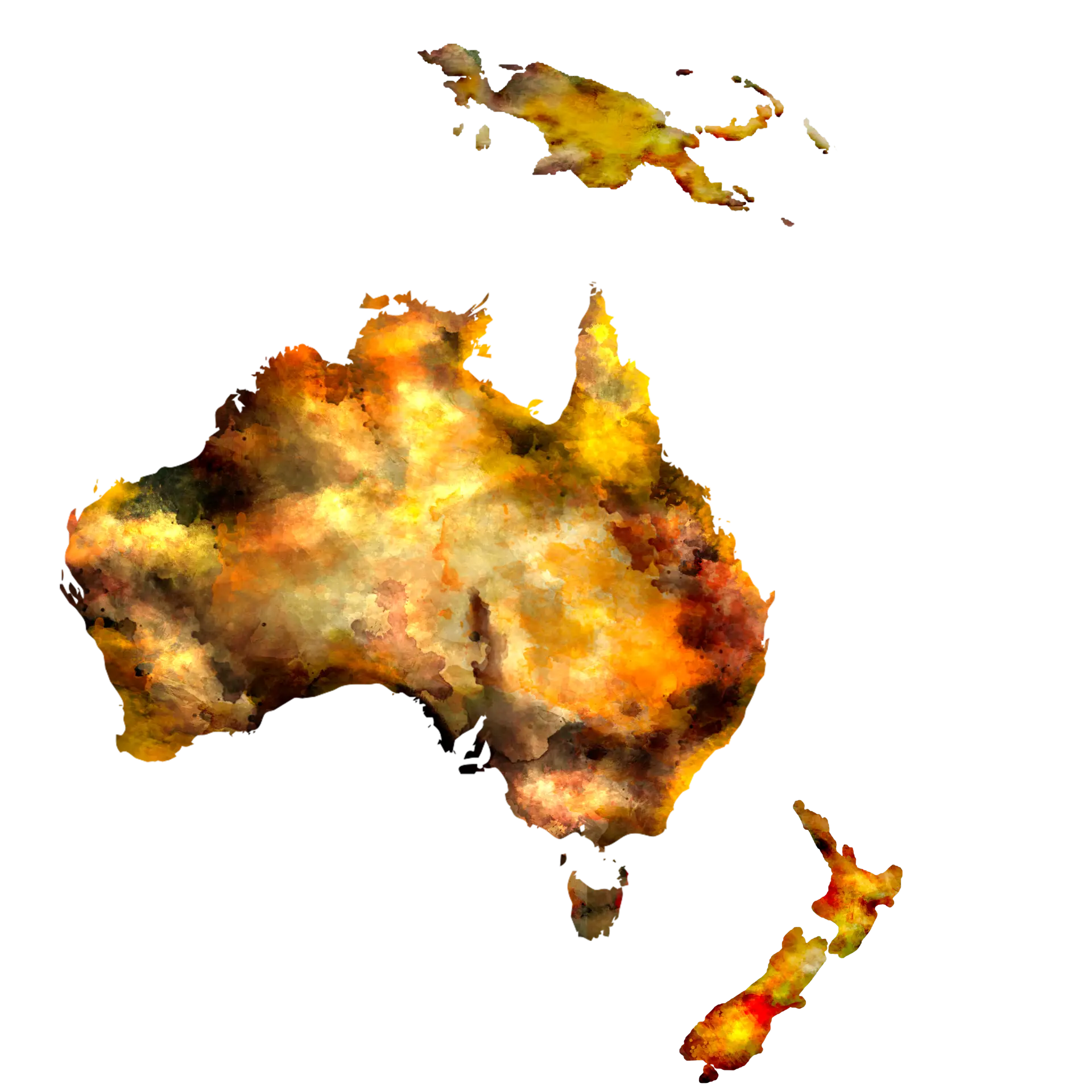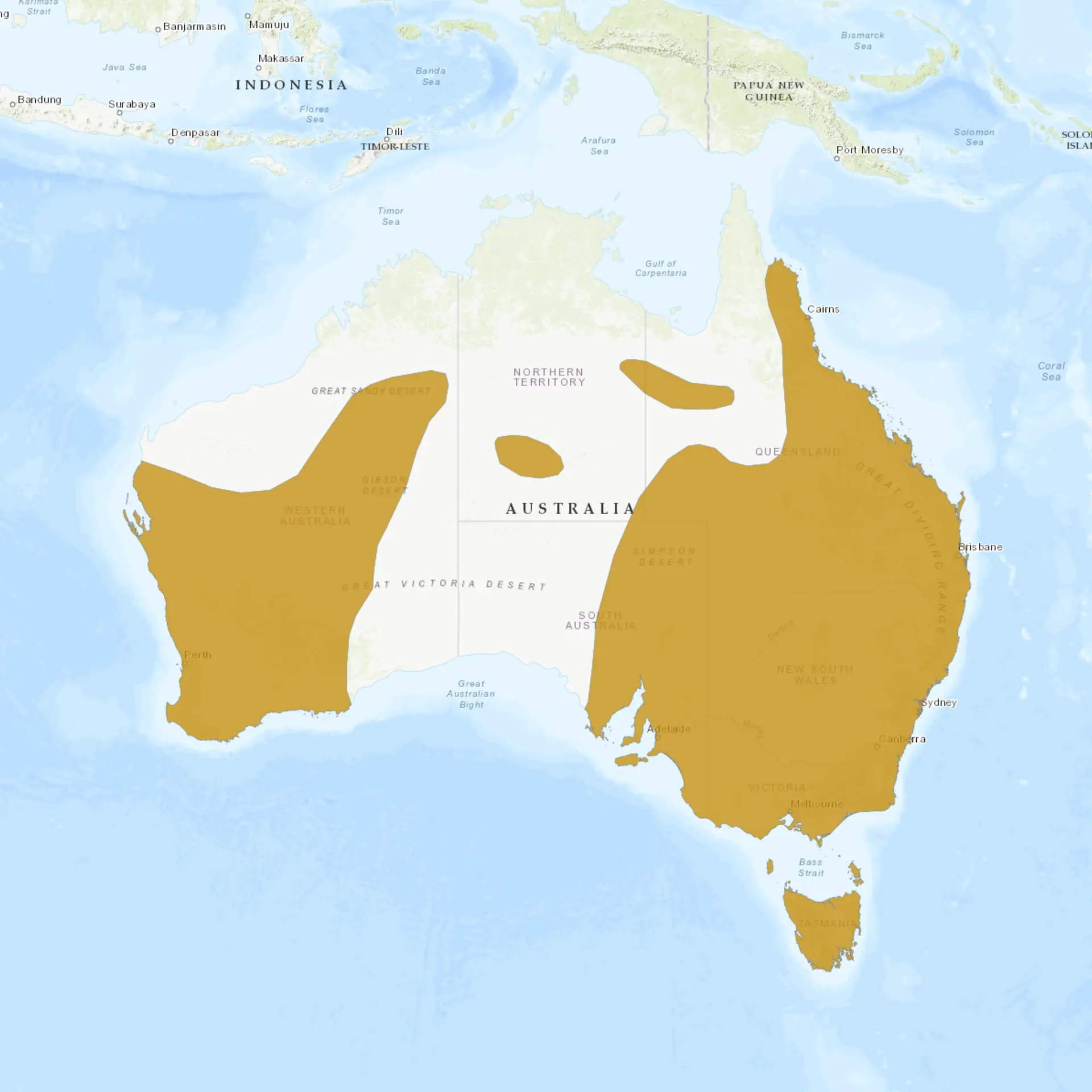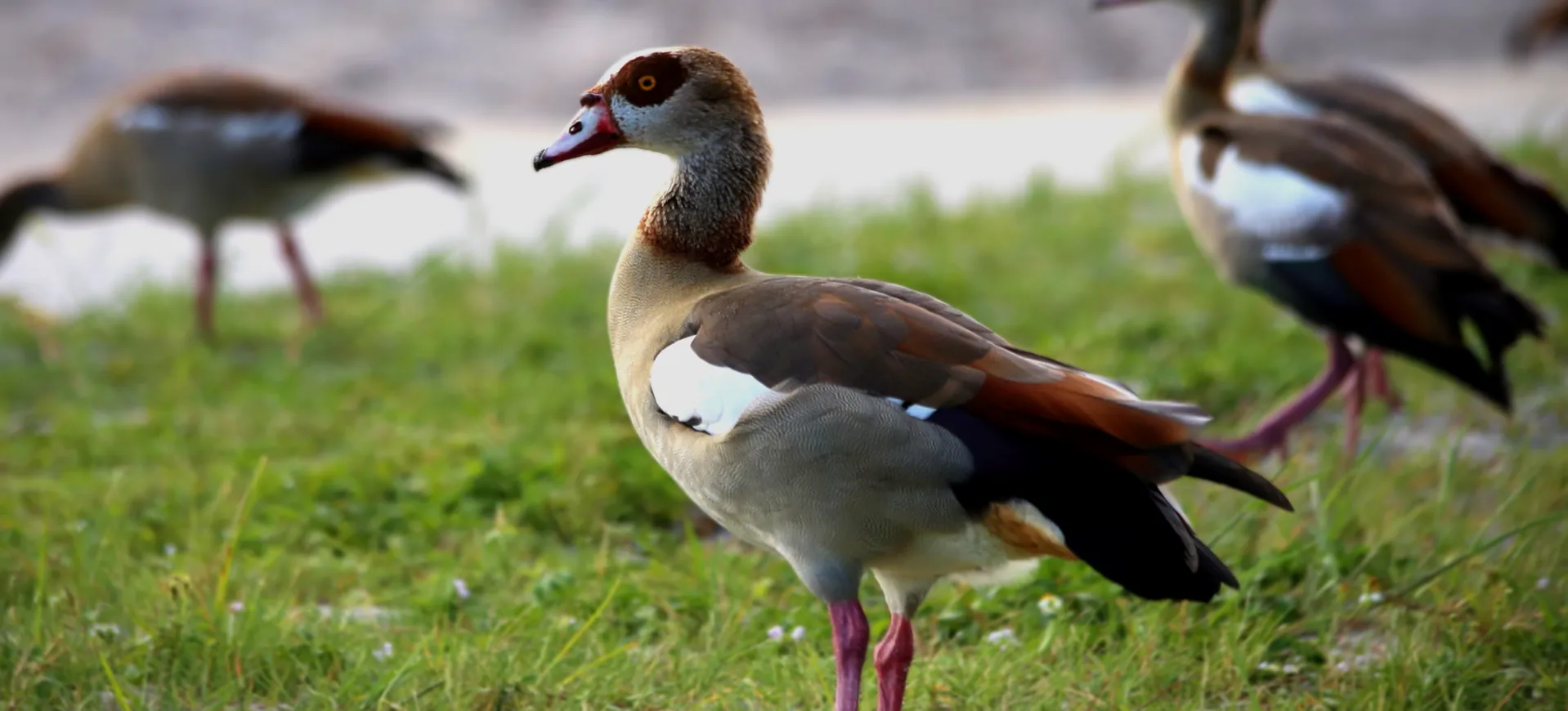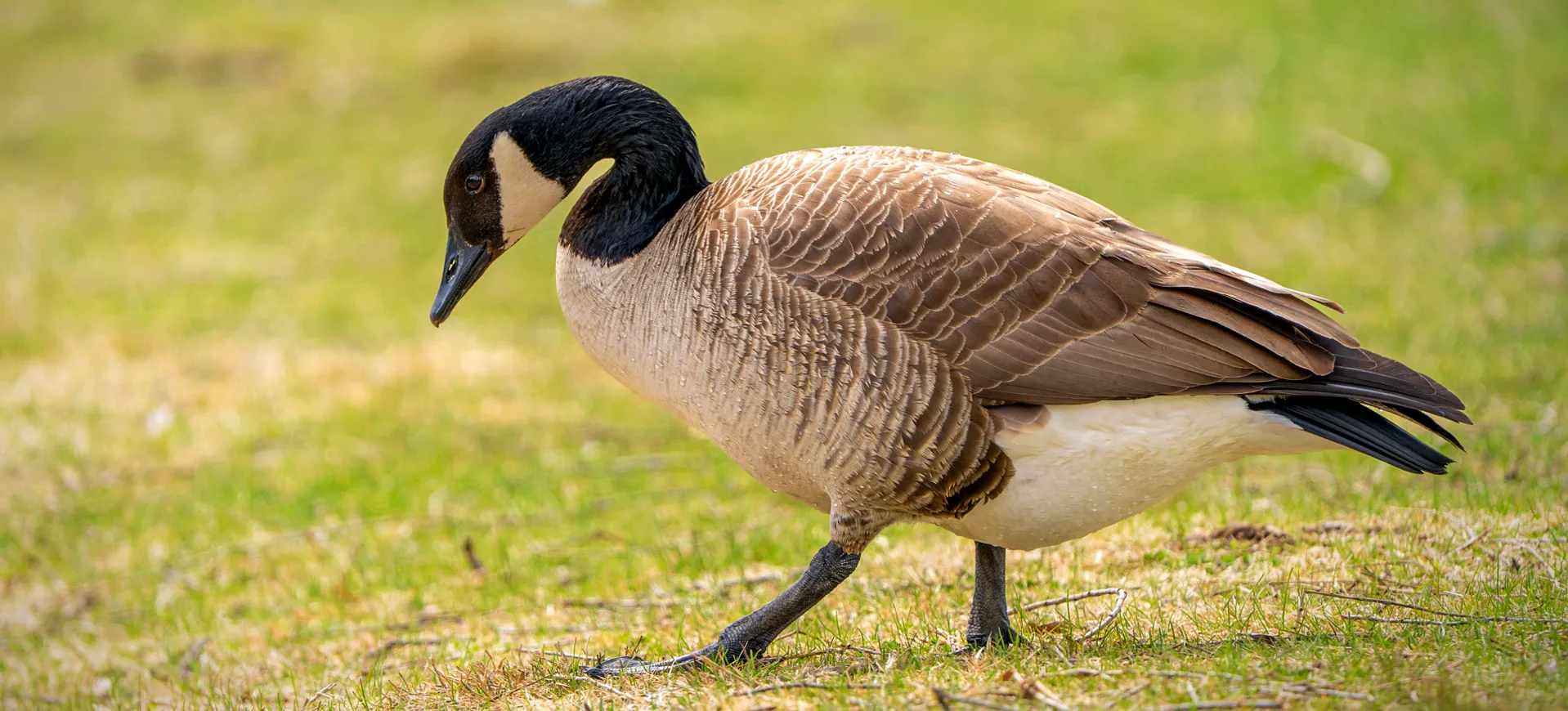Overview
The Australian Shoveler, scientifically known as Spatula rhynchotis rhynchotis, is a distinctive subspecies of Australasian Shoveler in Australia. This bird is noted for its large, shovel-shaped bill, which it uses to forage for food in shallow waters. The male Australian Shoveler displays striking plumage during the breeding season, with a dark head, white breast, and chestnut flanks. In contrast, the female is generally duller with mottled brown feathers. They inhabit wetlands, including lakes, swamps, and marshes, where they can be seen skimming the water’s surface for plankton, seeds, and small aquatic creatures.
The Australian Shoveler engages in migratory behavior, moving across regions depending on the availability of water and food sources. These ducks are highly sociable during the non-breeding season, forming large flocks congregating on lakes and wetlands. Their unique feeding technique involves sweeping their broad bill from side to side in the water to sift out food, making them efficient foragers. Conservation efforts are in place to ensure the preservation of their habitats, as the health of wetland ecosystems is crucial for the survival of this and many other species.
Australian Shovelers play a significant role in their ecosystems by contributing to controlling aquatic invertebrates and distributing plant seeds. Their presence indicates the health of wetland habitats, making them important subspecies for biodiversity. Monitoring and protecting their populations is vital for maintaining the ecological balance within their natural habitats.
Taxonomy
Kingdom
Phylum
Class
Order
Family
Genus
Species
Sub Species
Type
Current distribution:
Australian Shovelers are found across much of Australia, with their distribution being largely influenced by the presence of suitable wetland habitats. They are migratory birds, moving in response to seasonal water availability and food resource variations. During drought periods, they may travel long distances to find adequate habitats.
Their presence is widespread in Australia's southern and eastern regions, where wetlands are more prevalent. Research on the birds' distribution patterns is ongoing, highlighting the importance of habitat conservation in ensuring their continued survival in the wild. Efforts to protect and restore wetland habitats are vital for maintaining the population of Australian Shovelers, as these areas face threats from human activity and climate change.
Physical Description:
The Australian Shoveler is easily identifiable by its oversized, spatula-shaped bill, distinguishing it from other duck species. Males exhibit a striking coloration with bright plumage, while females and juveniles display more subdued tones, aiding in camouflage. The species demonstrates sexual dimorphism, with males being more vividly colored than females. This adaptation plays a role in mating and feeding, as their bill structure allows them to filter feed efficiently.
Australian Shovelers have a medium build among ducks, with robust bodies adapted for floating and a wingspan that facilitates swift and agile flight. Their legs are positioned towards the rear of their bodies, making them excellent swimmers but somewhat awkward on land. The broad bill is not just a feeding tool but also sensitive, allowing the bird to detect prey in murky waters. The variations in plumage between seasons are notable, with males shedding their bright feathers for more muted tones during the non-breeding season.

Lifespan: Wild: ~5 Years || Captivity: ~10 Years

Weight: Male: 1.2-1.4 lbs (550-650 g) || Female: 1.1-1.3 lbs (500-600 g)

Length: Male: 19-20 in (48-51 cm) || Female: 18-19 in (46-48 cm)

Wingspan: Male & Female: 28-31 in (70-80 cm)

Top Speed: 50 mph (80 km/h)
Characteristic:
Native Habitat:
The Australian Shoveler favors freshwater wetlands, including marshes, swamps, and shallow lakes, as its primary habitat. These environments provide the necessary food resources and vegetation for shelter and nesting. They prefer areas with abundant aquatic vegetation, supporting their diet and protecting them from predators.
Adaptations to their habitat include their specialized bill, which allows them to filter feed efficiently in shallow waters. The Australian Shoveler’s preference for wetlands makes the conservation of these areas crucial for their survival. They also inhabit saline lakes and coastal lagoons, demonstrating their adaptability to varying salinity levels in their search for feeding grounds.
Biomes:
Biogeographical Realms:
Continents:
Countries:
Diet:
Diet & Feeding Habits:
The Australian Shoveler is predominantly a filter feeder, using its large, spoon-shaped bill to sift through water for food. They primarily consume aquatic invertebrates, small fish, and various types of aquatic vegetation, including seeds and roots. This feeding strategy allows them to exploit a niche within their wetland habitats, reducing direct competition for food with other waterfowl species.
During the breeding season, Australian Shovelers may adjust their diet to meet the increased nutritional needs, favoring protein-rich invertebrates to support egg production and the growth of their young. They are often seen foraging in pairs or small groups, using their specialized bills to filter feed efficiently. The birds’ ability to consume various food sources is crucial in their adaptation to different wetland environments. Their foraging behavior has minimal impact on the ecosystem, contributing to the balance within their habitats.
Mating Behavior:
Mating Description:
Australian Shovelers form monogamous pairs during the breeding season, with courtship behaviors including elaborate displays by males to attract females. These displays are crucial for pair formation, with males showcasing their vibrant plumage and performing specific movements on the water’s surface. Nesting sites are typically in dense vegetation near water, protecting eggs and young chicks from predators.
The female is solely responsible for nest construction, egg incubation, and initial care of the offspring, while the male guards the territory. Australian Shovelers have a single breeding season, timed to coincide with the availability of abundant food and water. The success of breeding efforts is closely linked to the health of wetland ecosystems, making the conservation of these habitats essential.
Reproduction Season:
Birth Type:
Pregnancy Duration:
Female Name:
Male Name:
Baby Name:
Social Structure Description:
The Australian Shoveler exhibits a variable social structure, with individuals forming large flocks outside the breeding season. These flocks provide safety in numbers, reducing the risk of predation. Social interactions within flocks are complex, involving communication through vocalizations and body language.
During the breeding season, the social structure shifts, with pairs becoming territorial and more isolated to protect their nesting sites. This territorial behavior underscores the importance of suitable breeding habitats for the subspecies’ reproductive success. The Australian Shoveler’s social dynamics reflect its adaptability to different environmental conditions, playing a role in its survival strategies.
Groups:
Conservation Status:
Population Trend:
The Australian Shoveler is currently classified as Least Concern by the IUCN, indicating a stable population trend. This status reflects the species’ wide distribution and the presence of significant populations across its range. Conservation efforts and habitat management have played a role in maintaining stable populations despite habitat loss and degradation threats.
Monitoring Australian Shoveler populations is ongoing, with research focused on understanding their migration patterns, habitat requirements, and reproductive success. These efforts are crucial for identifying potential threats to their populations and implementing effective conservation strategies. The subspecies’ adaptability to different wetland environments has been a key factor in its resilience, allowing it to survive in changing landscapes.
Population Threats:
The primary threats facing the Australian Shoveler include habitat loss and degradation due to agricultural expansion, urban development, and water pollution. Wetlands, crucial for their survival, are particularly vulnerable to these threats. Climate change also poses a significant risk, with alterations in rainfall patterns and water availability affecting their breeding and feeding grounds.
Conservation efforts are focused on addressing these threats, including habitat restoration, pollution control, and implementing policies to protect wetland areas. Public awareness campaigns are also essential for highlighting the importance of wetland conservation in supporting biodiversity. The Australian Shoveler’s dependence on healthy wetland ecosystems underscores the need for integrated conservation approaches.
Conservation Efforts:
Conservation efforts for the Australian Shoveler include habitat protection and restoration initiatives aimed at preserving wetland ecosystems. These efforts are supported by both governmental and non-governmental organizations, emphasizing the ecological value of wetlands. Research and monitoring programs are critical for tracking population trends and understanding the subspecies’ ecological needs.
Education and community involvement play a key role in conservation, raising awareness about the importance of wetland preservation. Protected areas and wildlife reserves provide safe havens for Australian Shovelers, contributing to the stability of their populations. These conservation strategies, coupled with international agreements on migratory bird protection, are vital for ensuring the subspecies’ long-term survival.
Additional Resources:
Fun Facts
- The Australian Shoveler’s bill contains over 110 fine lamellae, which act like a sieve to filter food from the water.
- Unlike many other duck species, Australian Shovelers can extract food from the water without diving, thanks to their specialized bills.
- The subspecies is known for its remarkable migratory journeys, traveling vast distances for suitable wetlands.
- Australian Shovelers play a crucial role in their ecosystems by controlling insect populations and dispersing plant seeds.
- The male’s bright breeding plumage is shed after the breeding season, a phenomenon known as eclipse plumage.
- They can swift flight, reaching up to 50 mph during migration.
- Australian Shovelers are among the few subspecies of waterfowl that can change their diet seasonally to suit available food sources.
- The shape and size of their bill make them one of the most easily recognizable duck species in their range.
- Conservation efforts for Australian Shovelers include international cooperation to protect migratory routes and habitats.
- Despite their common status, they are less frequently seen than other duck species, making sightings a treat for birdwatchers.




















































































